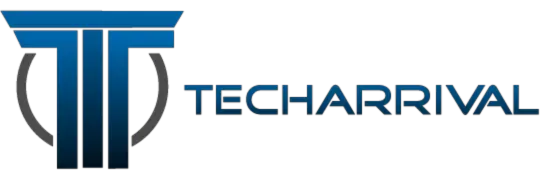The need for innovation within the field of law has given rise to legal-tech solutions. While some startups choose to outsource their development, others prefer having in-house IT teams. Trama, a global trademark registration provider, is one of the latter and often claims that its remarkable growth of over 5000 registration in just two years results from the collaboration between its legal and tech teams. In this interview, Simona Gerbocova, Front-End Developer at Trama, shares a behind-the-scenes look at how the teams at Trama work together to automate repetitive legal tasks.

Simona, What do you do in Trama?
I work as a Front-End Developer, so my primary responsibility is taking care of our website’s user interface. I ensure everything looks and works perfectly in all browsers and devices so users can easily interact with the pages. When you visit a website, you first notice how it looks and works, so I would say I’m on the front line of defining the user experience.
Who are your users?
I would divide the website users into two groups. The first group is entrepreneurs interested in their brand’s legal protection. The second is our B2B partners, mainly law firms, who seek a platform through which they can act on behalf of their clients. These two groups are very different, mainly in their level of knowledge about the process, so we always keep this in mind when trying to address their needs. Additionally, my team also develops tools for our internal legal team, so that would be our third group.
Are you working closely with Trama’s legal team?
Yes, we have an open line of communication. Trama’s goal, in general, is to create legal services for the 21st century, and I think that wouldn’t be possible if we didn’t start from within. So we are working with them on automating repetitive tasks they encounter in their day-to-day work.
Can you give us an example of how this collaboration looks?
Sure. We have our admin interface where our lawyers manage trademark requests. We encourage them to be assertive and let us know if there’s something that would save them time. So then we’ll get requests like ‘I would like to see all previous client’s requests to get a better overview.’ So we do it, and sometimes it seems like a minor change, but for them, it’s priceless.
And do you feel this effort is translating into a real difference?
Definitely! It’s what our lawyers say, and also the numbers. The time our team needs to spend on checking the registrability of a trademark or on application drafting has been significantly reduced. And I think we can go even further. For example, we are currently working on a new application form, which should improve the drafting process.
Can you tell us more about the trademark application form?
Before submitting the application to the intellectual property office, we prepare a draft. We have been using Google Docs for this process, with a predefined template with all the necessary fields. Some of them are prefilled based on the initial trademark request, some need to be filled out by the client, and the whole document then needs to be approved by them before we can proceed to the filing.
Using Google Docs for this process has been quite limiting since our lawyers usually exchange several emails and rounds of comments with the client, so it’s hard to keep track of the communication and what has been resolved.
So we decided to abandon Google Docs and create our own form to improve the process and decrease the time needed for filing each application.
Walk us through the process; how do you and your team bring a new feature to life?
It starts with an idea of what we want to create, improve, or what problem we want to solve. Then we will schedule a call with relevant team members to discuss the details. If it’s something that doesn’t need to be sketched out, it goes directly to the implementation phase. Otherwise, wireframes are prepared to visualize the structure and functions. This is usually the longest and the most difficult step, as there are many rounds of feedback, but doing this before writing any code saves us lots of time later.
Then, when the final design is prepared and approved, it goes to the development team. As soon as it is implemented, it is thoroughly tested. Finally, when everything is fine, and no errors have been found, it is released, and the new feature is live.
Does designing and developing a product like yours require some specific knowledge? Do you need to remember anything, or is it like working on any digital product?
I would say it’s both yes and no. In some ways, our product aims to meet any digital product’s goals – it should be easy to use, easy to understand, etc.
But then there are a few specificities. As I mentioned, we have two types of external clients, which are very different. On the one hand, we have legal professionals who understand the process well and probably use our services repeatedly, so they want to fill out everything as quickly as possible. On the other hand, we have business owners for whom the process and legal jargon might be overwhelming. We need to find ways to guide them through the process. This is sometimes a challenge, as we need to decide what information to show them and when so that it’s not too much at once.
As a closer, where do you see the potential for the use of technologies within the field of law?
I’d say the opportunities are virtually endless. Take what we have done with our legal team, for example. We achieved a lot, yet we are still finding new ways to do things more effectively. And the best part is that by optimizing their work, we can offer lower prices to the end client and use what we learned in crafting our platform for other legal professionals. So everyone wins.
